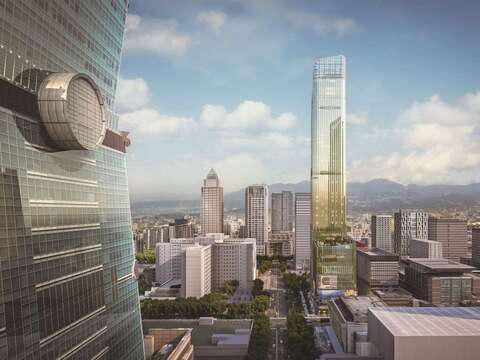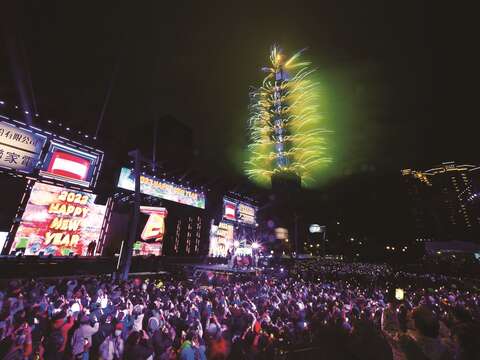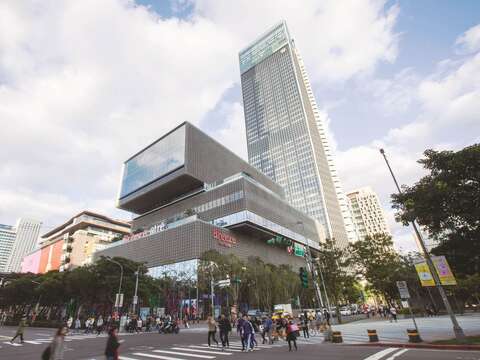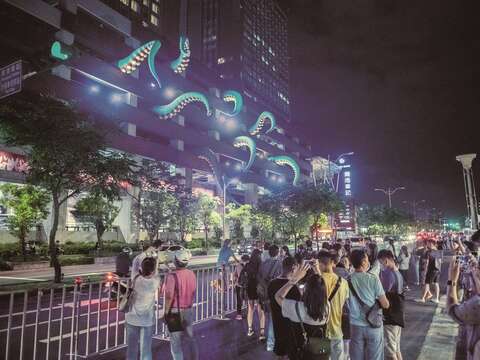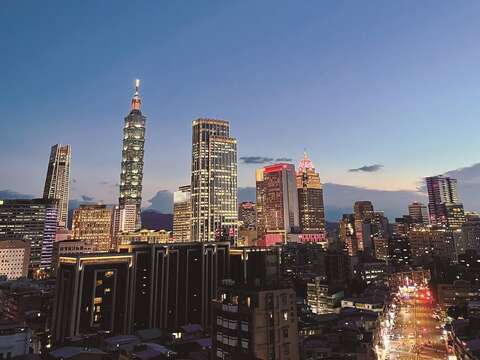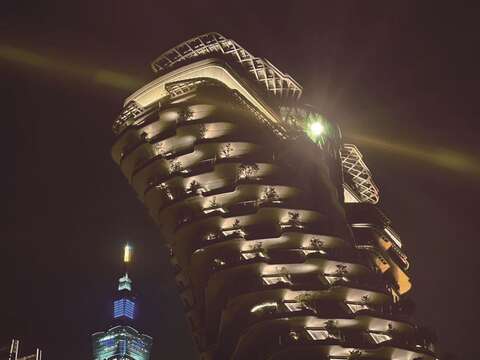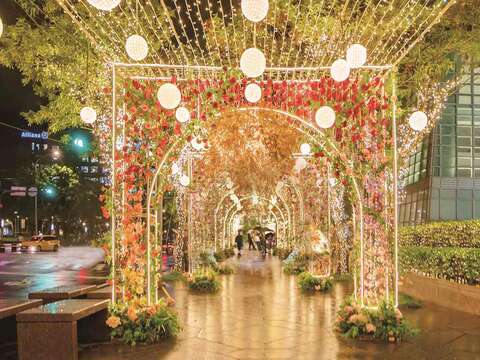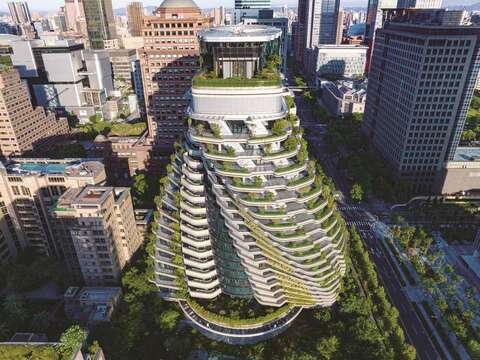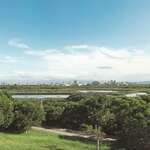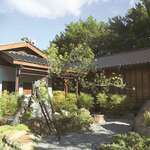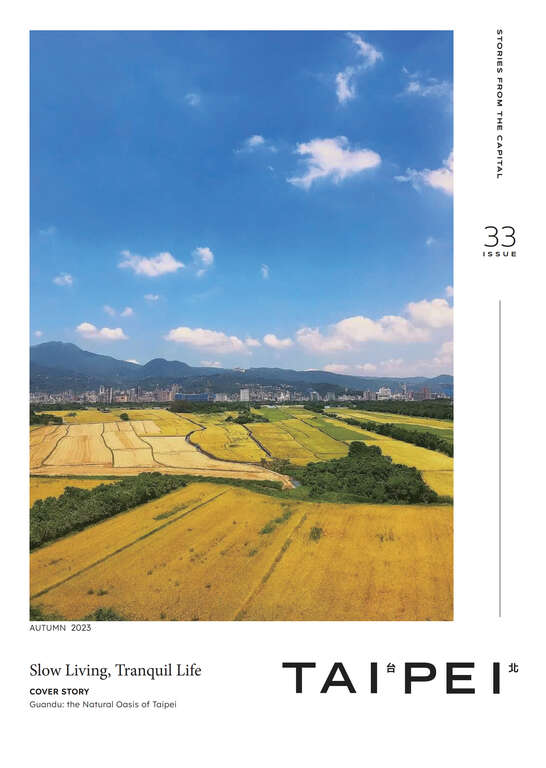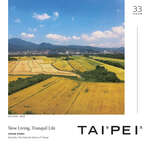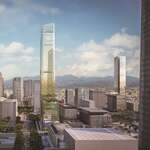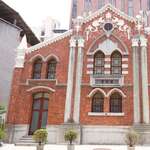Post date:2023-09-11
2362
TAIPEI #33 (2023 Autumn)
Eastern District + Xinyi District
Taipei’s East, Internationalized Gallery of Architectural Masterworks
Author Rick Charette
Photographer NeverEndingStudio, Agora Garden, Department of Cultural Affairs, Taipei City Government, Taipei Nan Shan Plaza, Department of Information andTourism, Taipei City Government, Taipei City Office of Commerce, Chieh-Li Yen, Miller Hsu
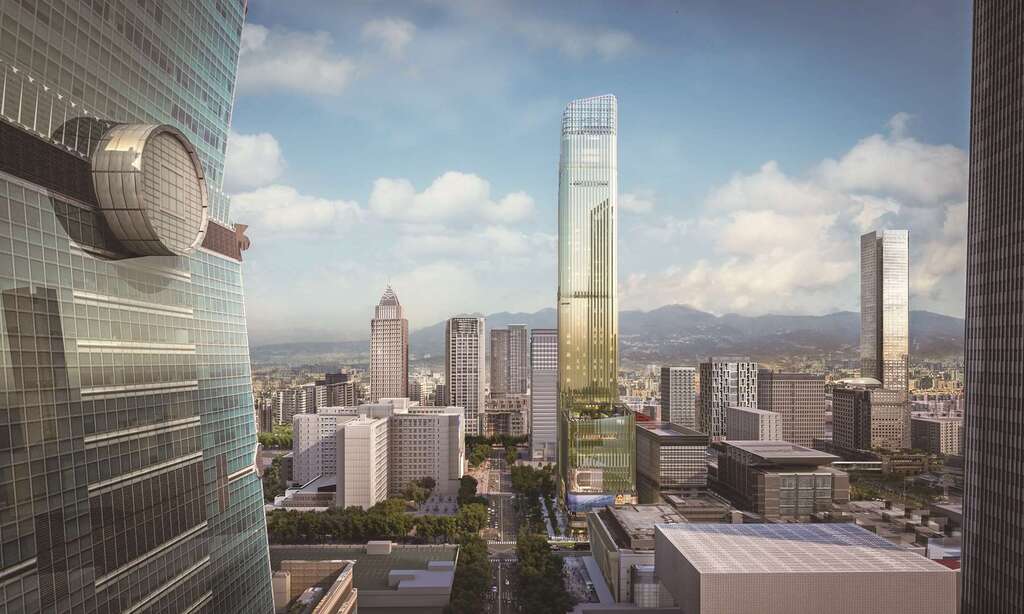 ▲A stunning view of the heavily internationalized eastern district Taipei. (Photo・NeverEndingStudio)
▲A stunning view of the heavily internationalized eastern district Taipei. (Photo・NeverEndingStudio)
Through the second half of the last century, well into its last decade, travel writers regularly described Taipei as “the ugly duckling of Asia.”
Today that is ancient history. In chrysalis style, the Taipei cityscape has since been reborn, emerging as one of Asia’s most strikingly photogenic, with its modern, internationalized beauty heightened further by the verdant mountain backdrop that surrounds the metropolis on all sides.
Starting from around the midpoint of the 20th century, severely cash-poor after the Chinese Civil War and faced with an influx of millions of refugees from China, Taiwan emphasized expediency over beauty, resulting in what has been charitably termed “homely but lovable” architecture dotted with such splashes of imagination as boldly colorful Chinese temples and more staid and stately Japanese-era buildings.
Today, the golden hive of architectural activity is the glitzy eastern district, especially Xinyi District within it, a magnet for landmark buildings in what is Taipei’s most internationalized sector. You’ll wander amidst an ever-growing forest of eco-friendly architectural imaginings that are showcases of the innovative integration of form and function. The skyline is a grand competition stage for the great names from the global arena of architects, vying for the cachet brought from association with visionary Taipei projects.
Let’s visit Xinyi District, Taipei’s commercial and financial heart, for a more intimate view of some of its best architectural artworks.
Taipei 101 ― Taiwan’s Tallest Building, National Icon
The skyscraping Taipei 101 ― yes, 101 stories high ― is the crown jewel in the Taipei architectural treasure trove. Visible from great distances as you near the city by plane or vehicle, it appears like a shining beacon in the deep Taipei Basin, the soaring structure at the same time looking like a great upright rocket-ship landed on Xinyi District, especially when dynamically lit up at night. This was Earth’s tallest building from December 1st, 2004 to January 7th, 2010, and still stands proud as the world’s tallest green building, sporting LEED Platinum certification.
Being the best-known and most resonant of Taipei’s landmarks among foreign visitors, it is even more recognizable around the globe as the platform for the spectacular fireworks show of the annual Taipei New Year’s Eve Party.
Designed by internationally acclaimed Taiwanese architect C.Y. Lee (李祖原), the 508-meter-high structure is a postmodernist work that evokes classical Asian aesthetics in a modern structure incorporating advanced industrial materials and technology.
The green-tint glass-façade nodal-design tower has an eight-section wedge-shaped series of eight floors each. In Chinese culture, the number eight is a symbol of prosperity and good fortune. The nodes collectively also resemble a bamboo stalk, a symbol of resilience and ceaseless growth (i.e., prosperity).
High on the must-do list for international tourists is a visit to the Taipei 101 Observatory. You can view the surrounding world from floors 88/89/91, the bravest souls able to take a guided tethered walk outside. On view inside is the mind-boggling tuned mass damper, the world’s largest wind-damper sphere, with a weight of 660 tons, and a diameter of 5.5 meters.
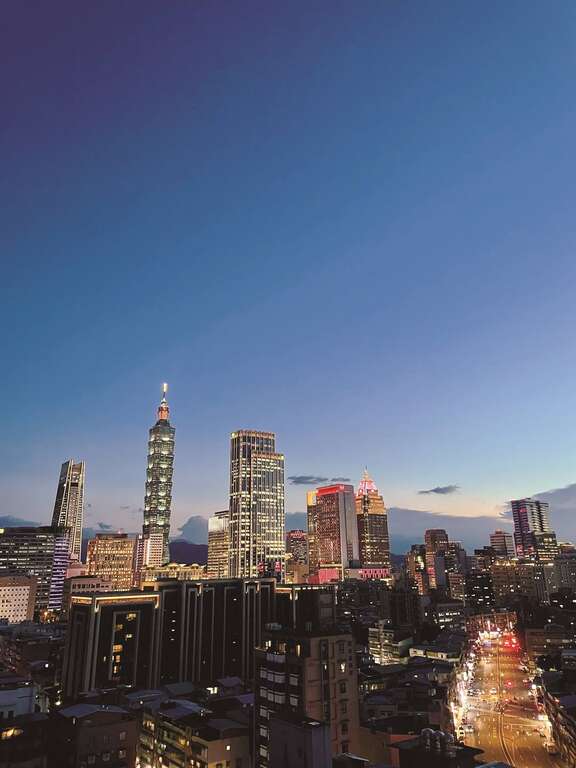 ▲The night view of Taipei City. (Photo・Chieh-Li Yen)
▲The night view of Taipei City. (Photo・Chieh-Li Yen)
Other Landmarks in Xinyi District
The city’s eastern district is its globe-watching trendsetter, Xinyi its commercial and financial nerve center. While the older western section is where tradition and history are preserved and nurtured, the internationalized east, especially Xinyi, eagerly looks to the future, seeing the wide world as its stage and passionately embracing all that is most modern and advanced. In a wide swath from Taipei 101 to the new Taipei Dome (台北大巨蛋), the “Big Egg,” nearer the city center, the towering cityscape is a powerful exhibit of metropolitan self-confidence and flair looking out at the world stage.
The design for the luxury Four Seasons Hotel Taipei, under construction directly south-facing Taipei 101 with an expected opening in 2025, was created by the Pritzker Architecture Prize-winning giant Richard Rogers.
The hotel will be 31 stories and 180 meters high, have about 260 rooms, and offer both city and mountain views. The design concept is to build “A utopia in the sky in the city center” with three primary criteria: internationalization, modernization, and landmark. The glass-curtain exterior ― the tall, thin structure will have the look of a leviathan gold-tint mobile phone standing upright ― will feature ultra-white low-emissivity glass and low-profile landscape elevators. The top floor will have a high ceiling to create a public-access skyline space allowing sensational panoramic views to flood in.
The soon-to-open The Sky Taipei (台北天空塔) is a half-block north of Taipei 101, immediately east of Taipei City Hall. The pan-Asia private equity real estate firm Riant Capital is developing this combination hotel/retail/performance hall/private club skyscraper and podium complex, which will be anchored by a duo of Hyatt Hotels luxury brands, the boutique Park Hyatt and the lifestyle Andaz. Responsible for the architectural design is the renowned team of Italian national treasures, Antonio Citterio and Patricia Viel.
This is Hyatt’s first dual-hotel luxury development project in Asia, and makes Taipei only the world’s third international city, after Tokyo and Shanghai, to have both Park Hyatt and Andaz brands within the same city skyline. They will have about 500 guest rooms combined.
The design is a celebration of Taiwan’s unique harmony of tradition and modernism, and especially Taipei’s energetic metropolitan vibe. The green-tinted glass curtain exterior draws inspiration from Taiwanese bamboo shoots and the pleats of ancient Greek columns, combining elements of both Taiwanese and Western cultures. In the 54-story tower, the Park Hyatt will take up floors 16 to 28, Andaz floors 30 to 49. Floors 50 to 51 will be a retail space. At 280 meters tall, the tower will be Xinyi’s second-tallest structure.
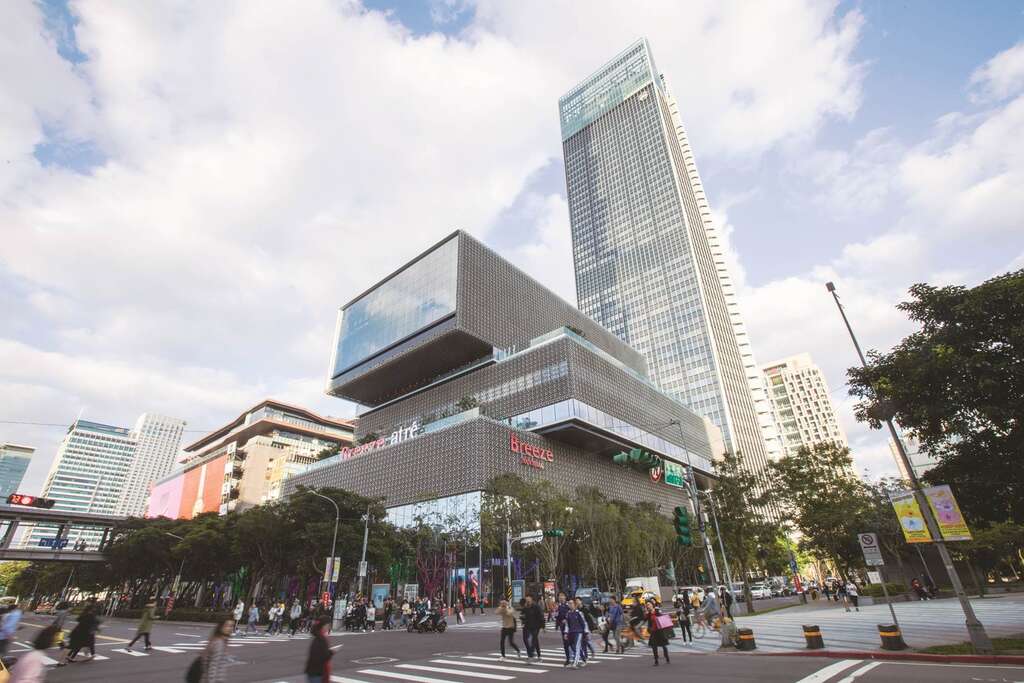 ▲Taipei Nan Shan Plaza is a key component of the core of Xinyi District. (Photo・Taipei Nan Shan Plaza)
▲Taipei Nan Shan Plaza is a key component of the core of Xinyi District. (Photo・Taipei Nan Shan Plaza)
Completed in 2018, Taipei Nan Shan Plaza (台北南山廣場), to the immediate east of the Taipei 101 complex, was designed by acclaimed architect Sube Yasuhiro (須部恭浩) of the prestigious Japanese architecture firm Mitsubishi Jisho Design (三菱地所設計). The complex has three structures: a 48-story, 272-meter-high office tower with some commercial floors, a 7-story mall, and a diamond-shaped entrance building with an open cultural/arts space.
The overall design interlinks these structures of differing height like a range of mountain peaks, in homage to Taiwan’s thick north-south spine of mountains. The twin spires that envelop the central core of the glass-curtain tower are in the shape of hands in prayer, symbolizing thankfulness. Floors 46 to 48 are filled with restaurants and bars offering stunning panoramic views. The cultural/arts building shares a polyhedron exterior-design motif with the tower. The mall consists of a series of stacked cubes of differing geometric shapes, their staggered positioning in turn creating a series of rising terraces which brim with trees; the overall visual effect is of a small forested mountain.
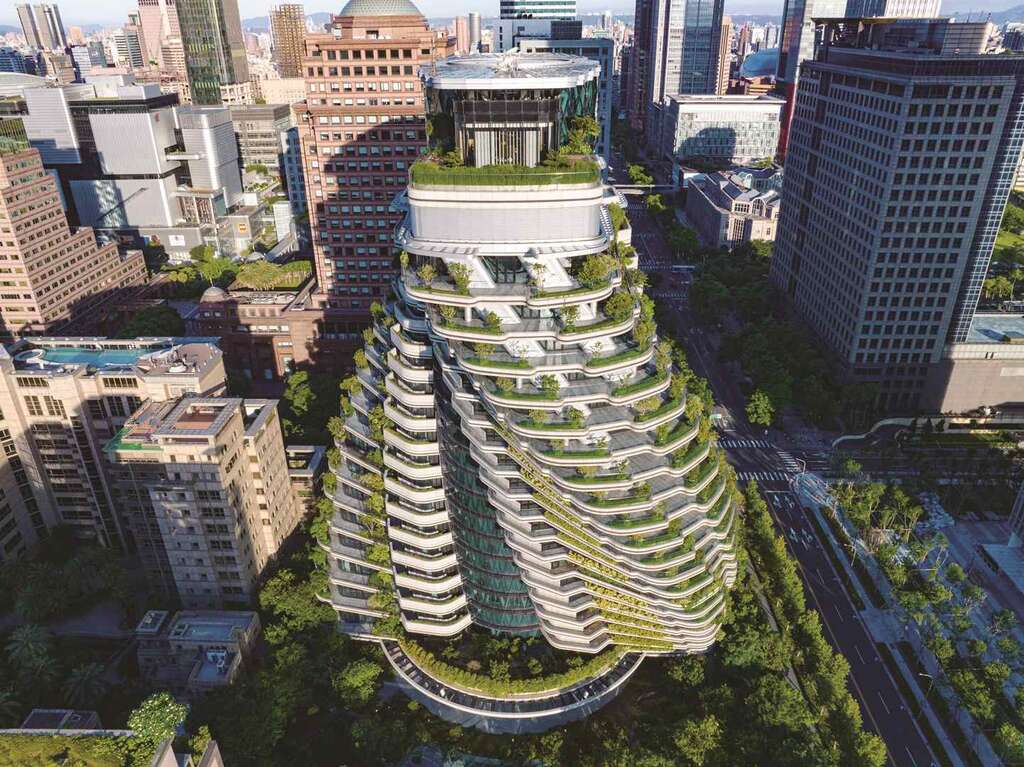 ▲Agora Garden, the world’s first three-dimensional residence with a rotating shape. (Photo・Agora Garden)
▲Agora Garden, the world’s first three-dimensional residence with a rotating shape. (Photo・Agora Garden)
The Agora Garden (陶朱隱園) is a few blocks northeast of Taipei 101. This dazzling luxury high-rise building, completed in 2018, is 21 stories high, 93.2 meters tall. Designed by the celebrated Belgian architect Vincent Callebaut, who specializes in futuristic eco-district ventures focused on sustainability, the structure enjoys LEED Gold certification as well as Diamond level recognition from the Low Carbon Building Alliance.
Its external appearance is dynamically flowing, with a singular serpentine shape in the form of a DNA strand, the double helix bending vigorously a full 90 degrees from base to roof. Each of the floors, which have a stacked appearance, is rotated 4.5 degrees from the ones above and below.
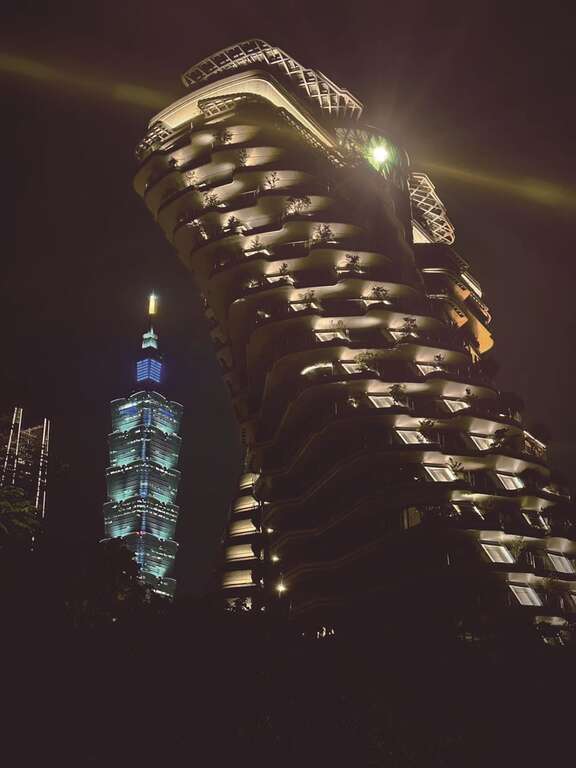 ▲Due to Agora Garden’s unique shape and its resemblance to Godzilla, it has become a tourist attraction on Google Maps, enticing visitors to check-in and take pictures. (Photo・Miller Hsu)
▲Due to Agora Garden’s unique shape and its resemblance to Godzilla, it has become a tourist attraction on Google Maps, enticing visitors to check-in and take pictures. (Photo・Miller Hsu)
Shrouding the roof and exterior are approximately 23,000 trees and shrubs, almost as many as in New York’s Central Park, eating up about 130 tons of CO2 emissions annually. Plants are also grown inside the tower’s hallways, which have glass flooring.
Big and Boisterous Events Coming Up in Xinyi District
Adding to the sophisticated, modern vibe of the eastern district is an event calendar filled with international festival celebrations.
In the early autumn, one must-experience will be Nuit Blanche Taipei (台北白晝之夜), an event deeply connected with the concepts of urban innovation and public design. It’s an all-night arts festival held on the first Saturday night of October, running from 6 pm to 6 am, inviting the public to explore the city in-depth through a wonderful array of live performances, installation artworks, multimedia projections and more. This year’s party will be on October 7th and 8th; the venue will be near the Taipei Dome, another of Taipei’s new monumental works of public architecture, and the Xinyi Shopping District (信義商圈).
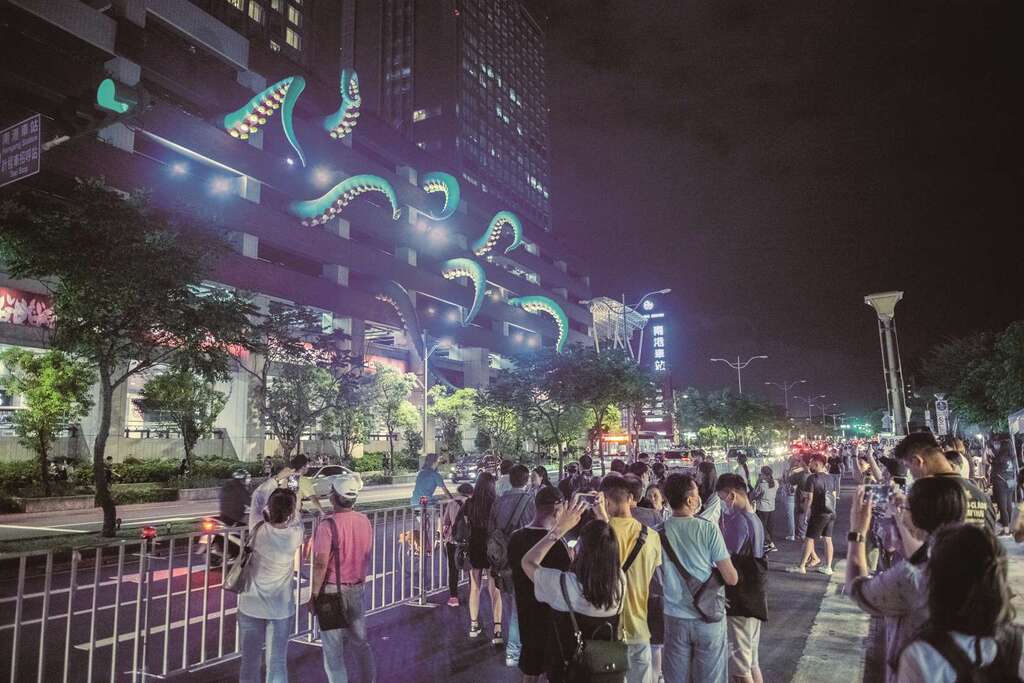 ▲The 2020 Nuit Blanche Taipei featured piece entitled Tentacles by British artist Filthy Luker. (Photo・Department of Cultural Affairs, Taipei City Government)
▲The 2020 Nuit Blanche Taipei featured piece entitled Tentacles by British artist Filthy Luker. (Photo・Department of Cultural Affairs, Taipei City Government)
The first Nuit Blanche was held in Paris in 2002; the Taipei edition, launched in 2016, has become one of the city’s liveliest large-scale arts extravaganza. Taipei’s unique multicultural diversity makes it one of Asia’s most Nuit Blanche-suitable capitals, the grand jamboree showcasing its artistic dynamism to the world and boosting its profile as an international cultural capital.
As the season progresses toward winter, the festive atmosphere will continue with international visitors and expats flocking to Taipei Xmas (繽紛耶誕玩台北) and Taipei New Year’s Eve Party (台北最High新年城). The first is held mid-November through early January, integrating department stores and boutiques across Xinyi and other shopping districts, the venues festooned with Christmas lighting decorations and featuring live entertainment, revelers using a stamp map and roaming over 70 check-in points.
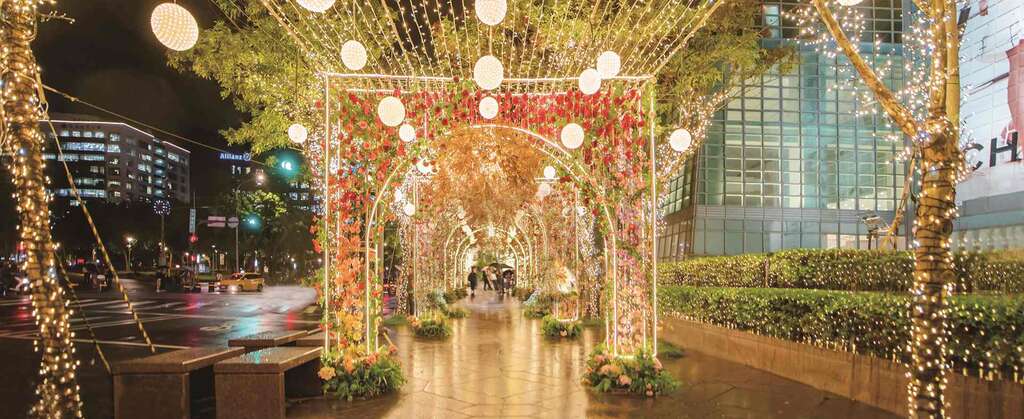 ▲The 2022 piece entitled Taipei Xmas is an arched tunnel in a sea of flowers, allowing visitors to take pictures, check-in, and feel the Christmas spirit. (Photo・Taipei City Office of Commerce)
▲The 2022 piece entitled Taipei Xmas is an arched tunnel in a sea of flowers, allowing visitors to take pictures, check-in, and feel the Christmas spirit. (Photo・Taipei City Office of Commerce)
The second is a colossal countdown party ringing in the new year, designed as a “once in a lifetime Asia” spectacle, with a phantasmagoria of lights put up around Taipei City Hall, a massive six-hour party with pop stars and bands, and the tremendous Taipei 101 midnight fireworks show, broadcast around the globe. There are also party events on January 1st and 2nd to ensure an extended festive experience.
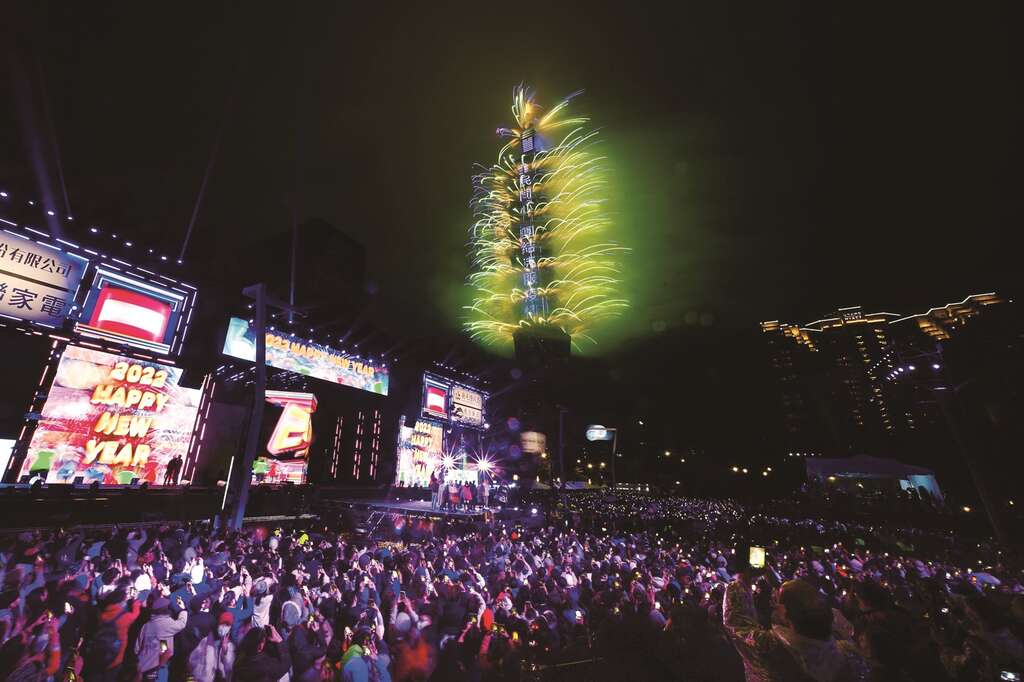 ▲The annual Taipei New Year’s Eve Party is put together by the Taipei City Government in Civic Square. (Photo・Department of Information and Tourism, Taipei City Government)
▲The annual Taipei New Year’s Eve Party is put together by the Taipei City Government in Civic Square. (Photo・Department of Information and Tourism, Taipei City Government)
Eastern District + Xinyi District
Taipei’s East, Internationalized Gallery of Architectural Masterworks
Author Rick Charette
Photographer NeverEndingStudio, Agora Garden, Department of Cultural Affairs, Taipei City Government, Taipei Nan Shan Plaza, Department of Information andTourism, Taipei City Government, Taipei City Office of Commerce, Chieh-Li Yen, Miller Hsu
 ▲A stunning view of the heavily internationalized eastern district Taipei. (Photo・NeverEndingStudio)
▲A stunning view of the heavily internationalized eastern district Taipei. (Photo・NeverEndingStudio)Through the second half of the last century, well into its last decade, travel writers regularly described Taipei as “the ugly duckling of Asia.”
Today that is ancient history. In chrysalis style, the Taipei cityscape has since been reborn, emerging as one of Asia’s most strikingly photogenic, with its modern, internationalized beauty heightened further by the verdant mountain backdrop that surrounds the metropolis on all sides.
Starting from around the midpoint of the 20th century, severely cash-poor after the Chinese Civil War and faced with an influx of millions of refugees from China, Taiwan emphasized expediency over beauty, resulting in what has been charitably termed “homely but lovable” architecture dotted with such splashes of imagination as boldly colorful Chinese temples and more staid and stately Japanese-era buildings.
Today, the golden hive of architectural activity is the glitzy eastern district, especially Xinyi District within it, a magnet for landmark buildings in what is Taipei’s most internationalized sector. You’ll wander amidst an ever-growing forest of eco-friendly architectural imaginings that are showcases of the innovative integration of form and function. The skyline is a grand competition stage for the great names from the global arena of architects, vying for the cachet brought from association with visionary Taipei projects.
Let’s visit Xinyi District, Taipei’s commercial and financial heart, for a more intimate view of some of its best architectural artworks.
Taipei 101 ― Taiwan’s Tallest Building, National Icon
The skyscraping Taipei 101 ― yes, 101 stories high ― is the crown jewel in the Taipei architectural treasure trove. Visible from great distances as you near the city by plane or vehicle, it appears like a shining beacon in the deep Taipei Basin, the soaring structure at the same time looking like a great upright rocket-ship landed on Xinyi District, especially when dynamically lit up at night. This was Earth’s tallest building from December 1st, 2004 to January 7th, 2010, and still stands proud as the world’s tallest green building, sporting LEED Platinum certification.
Being the best-known and most resonant of Taipei’s landmarks among foreign visitors, it is even more recognizable around the globe as the platform for the spectacular fireworks show of the annual Taipei New Year’s Eve Party.
Designed by internationally acclaimed Taiwanese architect C.Y. Lee (李祖原), the 508-meter-high structure is a postmodernist work that evokes classical Asian aesthetics in a modern structure incorporating advanced industrial materials and technology.
The green-tint glass-façade nodal-design tower has an eight-section wedge-shaped series of eight floors each. In Chinese culture, the number eight is a symbol of prosperity and good fortune. The nodes collectively also resemble a bamboo stalk, a symbol of resilience and ceaseless growth (i.e., prosperity).
High on the must-do list for international tourists is a visit to the Taipei 101 Observatory. You can view the surrounding world from floors 88/89/91, the bravest souls able to take a guided tethered walk outside. On view inside is the mind-boggling tuned mass damper, the world’s largest wind-damper sphere, with a weight of 660 tons, and a diameter of 5.5 meters.
 ▲The night view of Taipei City. (Photo・Chieh-Li Yen)
▲The night view of Taipei City. (Photo・Chieh-Li Yen)Other Landmarks in Xinyi District
The city’s eastern district is its globe-watching trendsetter, Xinyi its commercial and financial nerve center. While the older western section is where tradition and history are preserved and nurtured, the internationalized east, especially Xinyi, eagerly looks to the future, seeing the wide world as its stage and passionately embracing all that is most modern and advanced. In a wide swath from Taipei 101 to the new Taipei Dome (台北大巨蛋), the “Big Egg,” nearer the city center, the towering cityscape is a powerful exhibit of metropolitan self-confidence and flair looking out at the world stage.
The design for the luxury Four Seasons Hotel Taipei, under construction directly south-facing Taipei 101 with an expected opening in 2025, was created by the Pritzker Architecture Prize-winning giant Richard Rogers.
The hotel will be 31 stories and 180 meters high, have about 260 rooms, and offer both city and mountain views. The design concept is to build “A utopia in the sky in the city center” with three primary criteria: internationalization, modernization, and landmark. The glass-curtain exterior ― the tall, thin structure will have the look of a leviathan gold-tint mobile phone standing upright ― will feature ultra-white low-emissivity glass and low-profile landscape elevators. The top floor will have a high ceiling to create a public-access skyline space allowing sensational panoramic views to flood in.
The soon-to-open The Sky Taipei (台北天空塔) is a half-block north of Taipei 101, immediately east of Taipei City Hall. The pan-Asia private equity real estate firm Riant Capital is developing this combination hotel/retail/performance hall/private club skyscraper and podium complex, which will be anchored by a duo of Hyatt Hotels luxury brands, the boutique Park Hyatt and the lifestyle Andaz. Responsible for the architectural design is the renowned team of Italian national treasures, Antonio Citterio and Patricia Viel.
This is Hyatt’s first dual-hotel luxury development project in Asia, and makes Taipei only the world’s third international city, after Tokyo and Shanghai, to have both Park Hyatt and Andaz brands within the same city skyline. They will have about 500 guest rooms combined.
The design is a celebration of Taiwan’s unique harmony of tradition and modernism, and especially Taipei’s energetic metropolitan vibe. The green-tinted glass curtain exterior draws inspiration from Taiwanese bamboo shoots and the pleats of ancient Greek columns, combining elements of both Taiwanese and Western cultures. In the 54-story tower, the Park Hyatt will take up floors 16 to 28, Andaz floors 30 to 49. Floors 50 to 51 will be a retail space. At 280 meters tall, the tower will be Xinyi’s second-tallest structure.
 ▲Taipei Nan Shan Plaza is a key component of the core of Xinyi District. (Photo・Taipei Nan Shan Plaza)
▲Taipei Nan Shan Plaza is a key component of the core of Xinyi District. (Photo・Taipei Nan Shan Plaza)Completed in 2018, Taipei Nan Shan Plaza (台北南山廣場), to the immediate east of the Taipei 101 complex, was designed by acclaimed architect Sube Yasuhiro (須部恭浩) of the prestigious Japanese architecture firm Mitsubishi Jisho Design (三菱地所設計). The complex has three structures: a 48-story, 272-meter-high office tower with some commercial floors, a 7-story mall, and a diamond-shaped entrance building with an open cultural/arts space.
The overall design interlinks these structures of differing height like a range of mountain peaks, in homage to Taiwan’s thick north-south spine of mountains. The twin spires that envelop the central core of the glass-curtain tower are in the shape of hands in prayer, symbolizing thankfulness. Floors 46 to 48 are filled with restaurants and bars offering stunning panoramic views. The cultural/arts building shares a polyhedron exterior-design motif with the tower. The mall consists of a series of stacked cubes of differing geometric shapes, their staggered positioning in turn creating a series of rising terraces which brim with trees; the overall visual effect is of a small forested mountain.
 ▲Agora Garden, the world’s first three-dimensional residence with a rotating shape. (Photo・Agora Garden)
▲Agora Garden, the world’s first three-dimensional residence with a rotating shape. (Photo・Agora Garden)The Agora Garden (陶朱隱園) is a few blocks northeast of Taipei 101. This dazzling luxury high-rise building, completed in 2018, is 21 stories high, 93.2 meters tall. Designed by the celebrated Belgian architect Vincent Callebaut, who specializes in futuristic eco-district ventures focused on sustainability, the structure enjoys LEED Gold certification as well as Diamond level recognition from the Low Carbon Building Alliance.
Its external appearance is dynamically flowing, with a singular serpentine shape in the form of a DNA strand, the double helix bending vigorously a full 90 degrees from base to roof. Each of the floors, which have a stacked appearance, is rotated 4.5 degrees from the ones above and below.
 ▲Due to Agora Garden’s unique shape and its resemblance to Godzilla, it has become a tourist attraction on Google Maps, enticing visitors to check-in and take pictures. (Photo・Miller Hsu)
▲Due to Agora Garden’s unique shape and its resemblance to Godzilla, it has become a tourist attraction on Google Maps, enticing visitors to check-in and take pictures. (Photo・Miller Hsu)Shrouding the roof and exterior are approximately 23,000 trees and shrubs, almost as many as in New York’s Central Park, eating up about 130 tons of CO2 emissions annually. Plants are also grown inside the tower’s hallways, which have glass flooring.
Big and Boisterous Events Coming Up in Xinyi District
Adding to the sophisticated, modern vibe of the eastern district is an event calendar filled with international festival celebrations.
In the early autumn, one must-experience will be Nuit Blanche Taipei (台北白晝之夜), an event deeply connected with the concepts of urban innovation and public design. It’s an all-night arts festival held on the first Saturday night of October, running from 6 pm to 6 am, inviting the public to explore the city in-depth through a wonderful array of live performances, installation artworks, multimedia projections and more. This year’s party will be on October 7th and 8th; the venue will be near the Taipei Dome, another of Taipei’s new monumental works of public architecture, and the Xinyi Shopping District (信義商圈).
 ▲The 2020 Nuit Blanche Taipei featured piece entitled Tentacles by British artist Filthy Luker. (Photo・Department of Cultural Affairs, Taipei City Government)
▲The 2020 Nuit Blanche Taipei featured piece entitled Tentacles by British artist Filthy Luker. (Photo・Department of Cultural Affairs, Taipei City Government)The first Nuit Blanche was held in Paris in 2002; the Taipei edition, launched in 2016, has become one of the city’s liveliest large-scale arts extravaganza. Taipei’s unique multicultural diversity makes it one of Asia’s most Nuit Blanche-suitable capitals, the grand jamboree showcasing its artistic dynamism to the world and boosting its profile as an international cultural capital.
As the season progresses toward winter, the festive atmosphere will continue with international visitors and expats flocking to Taipei Xmas (繽紛耶誕玩台北) and Taipei New Year’s Eve Party (台北最High新年城). The first is held mid-November through early January, integrating department stores and boutiques across Xinyi and other shopping districts, the venues festooned with Christmas lighting decorations and featuring live entertainment, revelers using a stamp map and roaming over 70 check-in points.
 ▲The 2022 piece entitled Taipei Xmas is an arched tunnel in a sea of flowers, allowing visitors to take pictures, check-in, and feel the Christmas spirit. (Photo・Taipei City Office of Commerce)
▲The 2022 piece entitled Taipei Xmas is an arched tunnel in a sea of flowers, allowing visitors to take pictures, check-in, and feel the Christmas spirit. (Photo・Taipei City Office of Commerce)The second is a colossal countdown party ringing in the new year, designed as a “once in a lifetime Asia” spectacle, with a phantasmagoria of lights put up around Taipei City Hall, a massive six-hour party with pop stars and bands, and the tremendous Taipei 101 midnight fireworks show, broadcast around the globe. There are also party events on January 1st and 2nd to ensure an extended festive experience.
 ▲The annual Taipei New Year’s Eve Party is put together by the Taipei City Government in Civic Square. (Photo・Department of Information and Tourism, Taipei City Government)
▲The annual Taipei New Year’s Eve Party is put together by the Taipei City Government in Civic Square. (Photo・Department of Information and Tourism, Taipei City Government)Gallery
:::
Popular articles
 Guandu: the Natural Oasis of Taipei (TAIPEI Quarterly 2023 Autumn Vol.33)
Guandu: the Natural Oasis of Taipei (TAIPEI Quarterly 2023 Autumn Vol.33) TAIPEI Quarterly 2023 Autumn Vol.33
TAIPEI Quarterly 2023 Autumn Vol.33 Eastern District + Xinyi District Taipei's East, Internationalized Gallery of Architectural Masterworks (TAIPEI Quarterly 2023 Autumn Vol.33)
Eastern District + Xinyi District Taipei's East, Internationalized Gallery of Architectural Masterworks (TAIPEI Quarterly 2023 Autumn Vol.33) Guting: Leisure in Southern Taipei (TAIPEI Quarterly 2023 Autumn Vol.33)
Guting: Leisure in Southern Taipei (TAIPEI Quarterly 2023 Autumn Vol.33) The Beauty of Sacred Spaces ― A Taipei Church Tour (TAIPEI Quarterly 2023 Autumn Vol.33)
The Beauty of Sacred Spaces ― A Taipei Church Tour (TAIPEI Quarterly 2023 Autumn Vol.33) Tracing Taipei's Calligraphy Then and Now: Chu Chen-Nan's Artistic Journey and Insights (TAIPEI Quarterly 2023 Autumn Vol.33)
Tracing Taipei's Calligraphy Then and Now: Chu Chen-Nan's Artistic Journey and Insights (TAIPEI Quarterly 2023 Autumn Vol.33)
 Eastern District + Xinyi District Taipei's East, Internationalized Gallery of Architectural Masterworks (TAIPEI Quarterly 2023 Autumn Vol.33)
Eastern District + Xinyi District Taipei's East, Internationalized Gallery of Architectural Masterworks (TAIPEI Quarterly 2023 Autumn Vol.33)